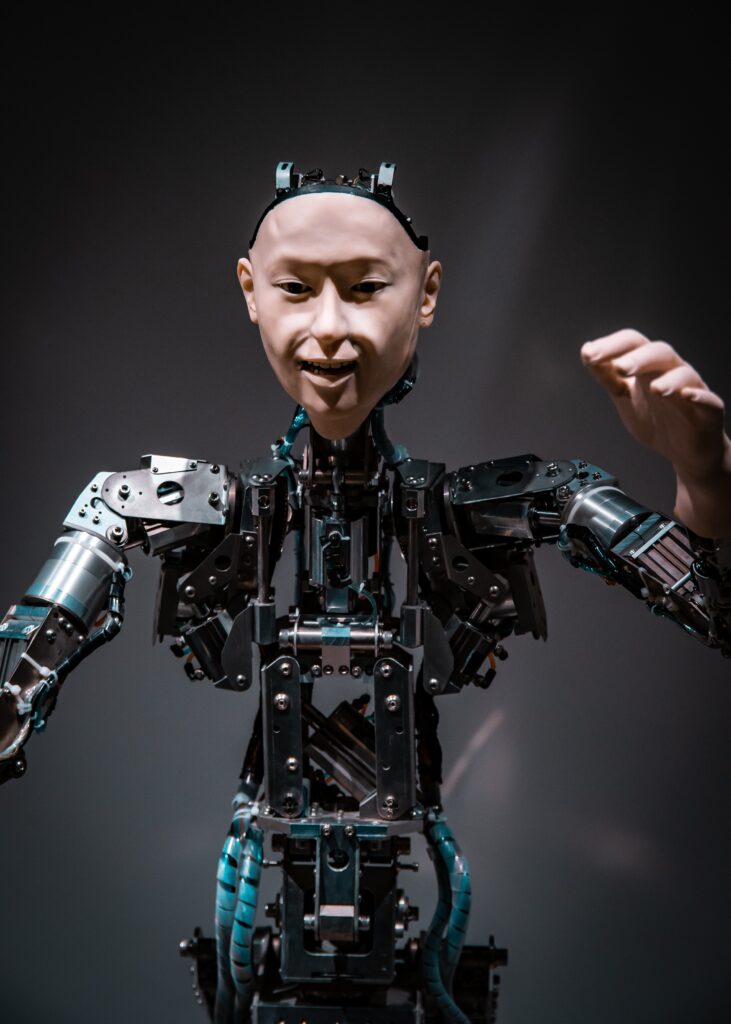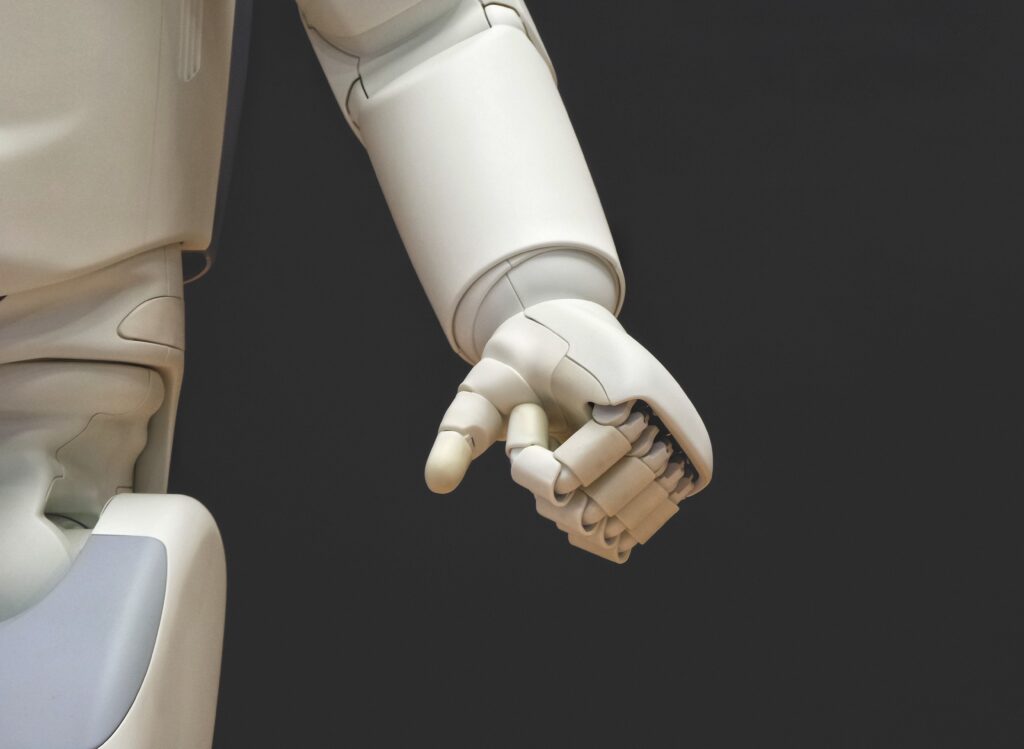
Machine learning and deep learning are both buzzworthy terms in the field of artificial intelligence, but what exactly sets them apart? In this article, we will unravel the distinctions between machine learning and deep learning and explore their respective use cases. By understanding the differences between these two approaches, you will be better equipped to determine which one is best suited for your specific needs and applications. So, let’s dive in and demystify the world of machine learning and deep learning!

Machine Learning
Definition
Machine learning is a subset of artificial intelligence (AI) that focuses on the development of algorithms and models that allow computers to learn from and make predictions or decisions based on data, without being explicitly programmed. In simple terms, it is the process of teaching a computer system to automatically learn and improve from experience.
Types of Machine Learning
Machine learning can be broadly classified into three main types: supervised learning, unsupervised learning, and reinforcement learning.
Supervised Learning
Supervised learning is a type of machine learning where the system is trained on labeled data. The algorithm learns to map the input variables to the corresponding output variables based on the provided examples. It tries to find patterns and relationships in the data to make predictions or classification.
Unsupervised Learning
Unsupervised learning, on the other hand, deals with unlabeled data. The algorithm explores the data to discover hidden patterns or structures without any prior knowledge or guidance. Clustering and dimensionality reduction are common unsupervised learning techniques used to gain insights from data.
Reinforcement Learning
Reinforcement learning involves an agent learning through trial and error interactions with an environment. The agent receives feedback in the form of rewards or penalties based on its actions, allowing it to learn the optimal strategies to maximize its performance.
Machine Learning Algorithms
There are various machine learning algorithms that can be applied depending on the type of problem and data available. Some commonly used algorithms include decision trees, random forests, support vector machines, logistic regression, and k-nearest neighbors.
Limitations
While machine learning has proven to be highly effective in various domains, it also has its limitations. One major limitation is the requirement of a large amount of labeled data for training. Additionally, the performance of machine learning models heavily depends on the quality and representativeness of the training data. Overfitting and bias in the models are also challenges that need to be addressed.
Deep Learning
Definition
Deep learning is a subset of machine learning that focuses on the development and implementation of artificial neural networks, inspired by the structure and functioning of the human brain. It aims to simulate human-like learning and pattern recognition abilities in machines.
Neural Networks
Neural networks are the building blocks of deep learning models. They consist of interconnected nodes, called neurons, arranged in layers. Each neuron takes inputs, applies weights to them, and passes the result through an activation function to produce an output. Deep learning models usually have multiple hidden layers, enabling them to learn and extract complex features from data.
Types of Deep Learning
Deep learning algorithms can be categorized into several types, each suited for different tasks.
Convolutional Neural Networks (CNN)
CNNs are widely used in computer vision tasks, such as image classification and object detection. They are designed to automatically learn and extract features from images by using convolutional layers that apply different filters to capture localized information.
Recurrent Neural Networks (RNN)
RNNs are commonly used for sequence data, such as natural language processing and speech recognition. They have the ability to process sequential information by using recurrent connections that allow feedback loops, enabling the model to retain information from previous steps.
Generative Adversarial Networks (GAN)
GANs consist of two neural networks: a generator and a discriminator. The generator generates new data by learning from a training set, while the discriminator tries to distinguish between real and fake data. This adversarial process leads to the generation of increasingly realistic data.
Deep Learning Algorithms
Deep learning algorithms include popular architectures like convolutional neural networks (CNNs), recurrent neural networks (RNNs), long short-term memory (LSTM), and deep belief networks (DBNs). These algorithms have been successfully applied in various domains, ranging from computer vision and natural language processing to speech recognition and robotics.
Limitations
Deep learning models require a large amount of data for training and can be computationally expensive. The training process can be time-consuming, especially for complex models. Another limitation is the lack of interpretability and explainability of deep learning models, making it difficult to understand the decision-making process.
Differences Between Machine Learning and Deep Learning
Representation and Abstraction
In machine learning, the model is typically built based on the features selected and engineered by humans. The representation of the problem domain depends on the design choices made by the data scientist. On the other hand, deep learning models automatically learn and extract relevant features from the raw data, eliminating the need for explicit feature engineering.
Feature Engineering
Machine learning often requires careful feature engineering to improve the model’s performance. This involves selecting and transforming relevant input variables to enhance the predictive power. Deep learning, on the other hand, can automatically learn relevant features from the data, reducing the need for manual feature engineering.
Computational Requirements
Deep learning models generally require more computational resources compared to traditional machine learning algorithms. The training process of deep learning models can be computationally intensive, especially when dealing with large datasets or complex architectures. Machine learning algorithms, on the other hand, are computationally less demanding.
Scale of Data
Machine learning algorithms can handle relatively small to medium-sized datasets efficiently. However, deep learning algorithms excel when dealing with large-scale datasets. Deep learning models can effectively leverage the vast amount of data available to improve their accuracy and performance.
Interpretability and Explainability
Machine learning models are generally easier to interpret and explain because they are based on explicitly defined features and algorithms. Deep learning models, on the other hand, often lack interpretability. The complex and highly interconnected nature of deep neural networks makes it challenging to understand how and why a decision was made.
Training Time and Complexity
Training deep learning models often requires more time and computational resources compared to training traditional machine learning models. Deep learning models with complex architectures and large datasets can take days or even weeks to train, whereas machine learning models can be trained relatively quickly.
Application Areas
Both machine learning and deep learning have a wide range of application areas. Machine learning is commonly used in recommendation systems, fraud detection, predictive analytics, and natural language processing. Deep learning, on the other hand, has shown remarkable performance in computer vision tasks, speech recognition, autonomous vehicles, and drug discovery.
Performance and Accuracy
Deep learning models have shown superior performance and accuracy compared to traditional machine learning models in certain domains, especially those that involve complex patterns or unstructured data. Deep learning excels in tasks such as image and speech recognition, where it has achieved human-level performance. However, for tasks with limited data availability or well-defined features, machine learning models can still be highly accurate and perform well.
Use Cases of Machine Learning
Image and Speech Recognition
Machine learning algorithms have transformed the fields of image and speech recognition. Image recognition-powered systems are used in various domains, from self-driving cars to medical imaging, enabling accurate detection and classification of objects and patterns. Speech recognition technologies power virtual assistants, transcription services, and voice-controlled devices.
Predictive Analytics
Machine learning algorithms can be used for predictive analytics to forecast future outcomes based on historical data. This has applications in various industries, including finance, marketing, healthcare, and manufacturing. Predictive analytics can help businesses make informed decisions, optimize processes, and identify potential risks or opportunities.
Recommendation Systems
Recommendation systems leverage machine learning algorithms to provide personalized recommendations to users. These systems analyze user preferences, behavior patterns, and historical data to suggest relevant products, services, or content. They are widely used in e-commerce, streaming platforms, and content aggregation websites.
Fraud Detection
Machine learning algorithms are effective in detecting anomalous behavior or patterns, making them valuable in fraud detection systems. By analyzing large volumes of data and identifying unusual patterns, machine learning models can detect and prevent fraudulent activities in real-time, in industries like finance, insurance, and e-commerce.
Natural Language Processing (NLP)
NLP involves the interaction between computers and human language. Machine learning algorithms, such as recurrent neural networks and transformer models, have greatly advanced NLP tasks like sentiment analysis, language translation, question answering, and chatbots. NLP applications have revolutionized customer service, content analysis, and language understanding.
Healthcare
Machine learning has the potential to transform healthcare by enabling improved diagnostics, personalized medicine, and efficient disease management. Machine learning algorithms can analyze patient data, medical records, and clinical guidelines to assist in disease diagnosis, prognosis, and treatment recommendations. It can also aid in medical image analysis and drug discovery.
Financial Analysis
Machine learning algorithms have become indispensable in financial analysis and trading. They can analyze large volumes of financial data, detect patterns, and make predictions to inform investment strategies and risk management. Machine learning is applied in credit scoring, fraud detection, algorithmic trading, and portfolio optimization.
Smart Home Devices
Machine learning algorithms power smart home devices and Internet of Things (IoT) technologies. These devices, such as smart speakers, thermostats, and security systems, can learn user behavior, adapt to preferences, and automate tasks. Machine learning algorithms enable voice recognition, facial recognition, and predictive abilities in smart home systems.

Use Cases of Deep Learning
Computer Vision
Deep learning has revolutionized computer vision tasks, enabling machines to understand and interpret visual data. It has applications in object detection, image classification, facial recognition, autonomous vehicles, and surveillance systems. Deep learning-based computer vision models have achieved human-level or even superhuman-level performance in certain tasks.
Natural Language Processing (NLP)
Just like in machine learning, deep learning has significantly advanced NLP tasks. Deep learning models, such as transformer-based language models, have achieved state-of-the-art performance in machine translation, language generation, sentiment analysis, and named entity recognition. Chatbots and virtual assistants also heavily rely on deep learning for language understanding and response generation.
Speech and Audio Recognition
Deep learning algorithms have greatly improved speech recognition systems, enabling accurate transcription and voice commands. Deep neural networks, such as recurrent neural networks and transformer models, have been successfully applied in speech recognition, speaker identification, voice assistants, and automatic speech translation.
Autonomous Vehicles
Deep learning plays a crucial role in enabling autonomous vehicles. Computer vision models based on deep learning algorithms can analyze real-time data from cameras or lidar sensors to understand the surrounding environment, detect objects, and make decisions. Deep learning also powers vehicle control systems and natural language interfaces in autonomous vehicles.
Drug Discovery and Development
Deep learning has disrupted the field of drug discovery and development. By analyzing large datasets of chemical compounds and their properties, deep learning models can predict molecular behavior, identify potential drug targets, and optimize drug design. Deep learning accelerates the drug discovery process, making it more efficient and accurate.
Robotics
Deep learning has found extensive applications in robotics, enabling robots to perceive and interact with the environment. Vision-based deep learning algorithms help robots navigate, detect objects, and perform tasks in dynamic environments. Reinforcement learning combined with deep learning also allows robots to learn and improve their actions based on feedback.
Gesture Recognition
Deep learning techniques have advanced gesture recognition systems, allowing machines to interpret and respond to human gestures. From sign language recognition to gesture-controlled interfaces in gaming and virtual reality, deep learning models can accurately identify and interpret various gesture patterns.
Virtual Assistants
Deep learning is at the core of virtual assistants like Siri, Alexa, and Google Assistant. These assistants leverage deep neural networks to understand and respond to natural language queries, provide personalized recommendations, and perform tasks. Deep learning enables the assistants to improve their understanding and context comprehension over time.
Conclusion
Machine learning and deep learning are powerful subfields of artificial intelligence that have revolutionized many domains. Machine learning is a more traditional approach that focuses on building models using explicit feature engineering, while deep learning focuses on the extraction of relevant features from raw data using deep neural networks.
They differ in several aspects, including representation and abstraction, feature engineering, computational requirements, scale of data, interpretability, training time, and application areas. Both machine learning and deep learning have valuable use cases in various industries, such as image and speech recognition, predictive analytics, recommendation systems, fraud detection, healthcare, finance, and smart home devices.
Understanding the differences between machine learning and deep learning is crucial for leveraging their potential in solving complex problems and unlocking new opportunities in the era of AI. As technology continues to evolve, both machine learning and deep learning will play integral roles in shaping the future of AI-driven applications.




